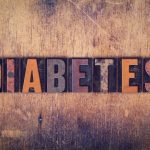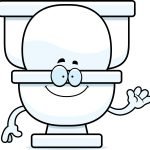Tolle Totum – Anxiety and Depression: The Gut-Brain Connection
NICOLE CAIN, ND, MA
MICHELLE MADDUX, ND
Anxiety and depression are not new issues for human beings. However, their prevalence has been increasing at shocking rates over the past few years. Preliminary data estimates that depression rates have tripled since early 2020,1 and as of 2021, over 280 million people in the world deal with depression.2 In the United States, 40 million adults are estimated to be affected by anxiety.3 This picture is even more concerning than it may first appear; because mental health issues are generally underreported, it is likely these numbers are even higher.4
Studies looking at pharmaceutical efficacy for anxiety disorders show the majority of prescription interventions have efficacy ratings only somewhat over those for placebos.5 Selective serotonin reuptake inhibitors, a prominent class of medications used for depression and anxiety, have been shown to have only a moderate impact on quality of life, with that efficacy only slightly bolstered when combined with cognitive behavioral therapy.6 Moreover, the presence of negative side effects of antidepressants and anxiolytic drugs, including unwanted weight gain, impaired sexual response, and suicidal ideation, make compliance a significant issue. It is not surprising then that extensive use of alternative therapies is prevalent in this patient population.7
The Gut-Brain Axis
Part of the hypothalamic-pituitary-adrenal axis involves a connection between the gut and the brain. Known as the gut-brain axis, this connection consists of 3 elements.8 The first is the vagus nerve, a part of the parasympathetic nervous system that provides bidirectional communication between the gut and the brain.8 The second is the enteric nervous system (ENS), which resides throughout the entirety of the gastrointestinal system (GI) and can be stimulated by either the parasympathetic or sympathetic nervous system activity.9 The third element consists of the more than 1 trillion microorganisms that live in the GI tract, collectively referred to as the microbiota.10 Also relevant to the gut-brain axis is the environment produced between the microbiota and the host, including the metabolic products and byproducts that result (aka, the microbiome).11
Therapies for anxiety and depression, regardless of medical discipline,12 largely target the gut-brain axis.13 Each component of the gut-brain axis plays key roles in inflammation,8 which has been implicated as having a large role in depression8 and anxiety disorders.14 Therefore, an optimal treatment protocol for a patient experiencing depression and/or anxiety should not just address each component of the gut-brain axis, but also seek to reduce inflammation.
Treatment Fundamentals That Impact Anxiety and Depression
In a healthy gut, the microbiome works to minimize inflammation and promote optimal immune and neurological function. Beneficial products of the gut microbiota include short-chain fatty acids (SCFAs), long-chain fatty acids, gamma amino butyric acid, secondary bile acids, and tryptophan.15 Many of these products are highly influential in the inflammation cascade. For example, SCFAs produced by gut microbiota, acting on resistant starch, regulate the expression of immune cells.15 SCFAs and secondary bile acids can also synthesize serotonin and regulate its release.16 Upwards of 90% of serotonin in the body is made by the gut microbiota.16
Psychobiotics
For a more specific approach to helping patients dealing with anxiety and depression, the microbiome may be targeted using a psychobiotic: a pre- and/or probiotic specifically formulated with strains that positively impact the gut-brain axis.17 Research has shown that using targeted psychobiotics has a positive impact on depression.18,19 A multistrain psychobiotic administered in a 4-week study improved positive affect and decreased feelings of hopelessness and depression in study participants.19 In the same study, subjects were examined with functional MRIs (fMRIs) before and after the intervention window. The fMRIs showed increased connectivity in the salience network of the brain, which is responsible for attention, perception, and cognition. They also showed reduced connectivity in the default mode network, a set of regions of the brain that is active during periods of decision making, rumination, and distraction.19
A hypothesis for the mechanism of action of psychobiotics involves brain-derived neurotrophic factor (BDNF), a substance whose expression is regulated by SCFAs, especially butyrate. BDNF is a key component in promoting neuroplasticity and is heavily involved in gut-brain signaling.20
Diet
Addressing a patient’s diet is another way to affect the gut-brain axis to decrease anxiety and/or depression. As naturopathic doctors who take the “doctor as teacher” edict seriously, we can teach our patients how to improve their diet more easily by giving reasons behind our recommendations. At least 1 study has shown a link between patients’ adherence to a Mediterranean-based diet high in fruits and vegetables and a decreased risk of anxiety.21 Other clinical studies have shown reduced depression risk with high quality diets, usually high in fiber, fruits, vegetables, and legumes, as well as healthy proteins, oils, and fats.22 Diets high in fiber naturally support optimal levels of SCFAs. In addition to modulating serotonin and immune activity, SCFAs also play a role in reducing intestinal permeability.
With increased intestinal permeability, aggravating factors like lipopolysaccharide – a known inflammatory bacterial component – are allowed into circulation, and these can increase systemic inflammation.22 Consuming higher amounts of fruits and vegetables, many of which are high in both fiber and antioxidants, can help reduce both intestinal permeability and the resulting systemic inflammation. By extension, they can also reduce the predilection toward anxiety and/or depression that has been associated with poor diet, dysbiosis, increased intestinal permeability, and/or increased inflammation.
Vagal Stimulation
Finally, stimulating the vagus nerve by promoting active relaxation activities will promote healthy bidirectional communication between the brain and the gut.8 This communication is a key part of the gut-brain axis and can impact mood, the immune system, heart rate, and digestion.8 Therapies targeting the vagus nerve have been successfully used to benefit inflammatory bowel disease, post-traumatic stress disorder, and depression.8 Such therapies include yoga, meditation, and heart rate variability training, all of which have been shown to improve mood and the ability to cope with stressors. Each of these practices concentrates on breathing and helps patients slow their breathing rate, make each exhalation longer than the inhalation, and shift the focus of breathing from high in the chest to down into the abdomen.23 Doing these exercises stimulates the vagus nerve, which can help shift the body out of sympathetic activation and into a parasympathetic state.8 As a result, anxiety tends to lessen, heart rate decreases, blood pressure drops, and the GI can resume peristalsis. Whichever technique a patient uses to accomplish this is not important. Simply helping them find a technique that works consistently for them will help stimulate the vagus nerve, promote a parasympathetic response throughout their body (especially in the gut), and help counteract the symptoms of anxiety and depression they may be experiencing.
Conclusions
The last few years have seen profound increases in reported rates of anxiety and depression. Because many pharmaceuticals have limited efficacy and side effects that are often challenging (and sometimes unacceptable), many patients are looking for alternative options. Practitioners should take the time to listen and educate their patients. Using therapies like psychobiotics, diets with increased fiber and antioxidants that promote healthy microbiomes, and vagus nerve stimulation, practitioners can help patients regain control over their mental health. These profound interventions will not only help improve symptoms of depression and/or anxiety, but they will bolster the overall quality of life for patients as well.
References
- Ettman CK, Cohen GH, Abdalla SM, et al. Persistent depressive symptoms during COVID-19: a national, population-representative, longitudinal study of U.S. adults. Lancet Reg Health Am. 2022;5:100091.
- Depression. World Health Organization. Updated September 13, 2021. Available at: https://www.who.int/news-room/fact-sheets/detail/depression. Accessed February 27, 2022.
- Facts & Statistics. Anxiety & Depression Association of America. Updated September 29, 2021. Available at: https://adaa.org/understanding-anxiety/facts-statistics. Accessed February 27, 2022.
- Week of December 13, 2021 COVID-19 Behavioral Health Impact Situation Report. Washington State Department of Health. December 13, 2021. Available at: https://www.doh.wa.gov/Portals/1/Documents/1600/coronavirus/821-102-BehavioralHealthImpactReport-20211213.pdf. Accessed February 27, 2022.
- Gomez AF, Barthel AL, Hofmann SG. Comparing the efficacy of benzodiazepines and serotonergic anti-depressants for adults with generalized anxiety disorder: a meta-analytic review. Expert Opin Pharmacother. 2018;19(8):883-894.
- Hofmann SG, Curtiss J, Carpenter JK, et al. Effect of treatments for depression on quality of life: a meta-analysis. Cogn Behav Ther. 2017;46(4):265-286.
- Bystritsky A, Hovav S, Sherbourne C, et al. Use of complementary and alternative medicine in a large sample of anxiety patients. Psychosomatics. 2012;53(3):266-272.
- Breit S, Kupferberg A, Rogler G, et al. Vagus Nerve as Modulator of the Brain-Gut Axis in Psychiatric and Inflammatory Disorders. Front Psychiatry. 2018;9:44.
- Fleming MA 2nd, Ehsan L, Moore SR, Levin DE. The Enteric Nervous System and Its Emerging Role as a Therapeutic Target. Gastroenterol Res Pract. 2020;2020:8024171.
- Yuan B, Lu XJ, Wu Q. Gut Microbiota and Acute Central Nervous System Injury: A New Target for Therapeutic Intervention. Front Immunol. 2021;12:800796.
- Whiteside SA, Razvi H, Dave S, et al. The microbiome of the urinary tract–a role beyond infection. Nat Rev Urol. 2015;12(2):81-90.
- Strawn JR, Geracioti L, Rajdev N, et al. Pharmacotherapy for generalized anxiety disorder in adult and pediatric patients: an evidence-based treatment review. Expert Opin Pharmacother. 2018;19(10):1057-1070.
- Liu L, Zhu G. Gut-Brain Axis and Mood Disorder. Front Psychiatry. 2018;9:223.
- Michopoulos V, Powers A, Gillespie CF, et al. Inflammation in Fear- and Anxiety-Based Disorders: PTSD, GAD, and Beyond. Neuropsychopharmacology. 2017;42(1):254-270.
- Yuan B, Lu XJ, Wu Q. Gut Microbiota and Acute Central Nervous System Injury: A New Target for Therapeutic Intervention. Front Immunol. 2021;12:800796.
- Martin CR, Osadchiy V, Kalani A, et al. The Brain-Gut-Microbiome Axis. Cell Mol Gastroenterol Hepatol. 2018;6(2):133-148.
- Sarkar A, Lehto SM, Harty S, et al. Psychobiotics and the Manipulation of Bacteria-Gut-Brain Signals. Trends Neurosci. 2016;39(11):763-781.
- Mörkl S, Butler MI, Holl A, et al. Probiotics and the Microbiota-Gut-Brain Axis: Focus on Psychiatry [published correction appears in Curr Nutr Rep. 2020 Jun 5]. Curr Nutr Rep. 2020;9(3):171-182.
- Bagga D, Reichert JL, Koschutnig K, et al. Probiotics drive gut microbiome triggering emotional brain signatures. Gut Microbes. 2018;9(6):486-496.
- O’Leary OF, Ogbonnaya ES, Felice D, et al. The vagus nerve modulates BDNF expression and neurogenesis in the hippocampus. Eur Neuropsychopharmacol. 2018;28(2):307-316.
- Sadeghi O, Keshteli AH, Afshar H, et al. Adherence to Mediterranean dietary pattern is inversely associated with depression, anxiety and psychological distress. Nutr Neurosci. 2021;24(4):248-259.
- Taylor AM, Holscher HD. A review of dietary and microbial connections to depression, anxiety, and stress. Nutr Neurosci. 2020;23(3):237-250.
- Gerritsen RJS, Band GPH. Breath of Life: The Respiratory Vagal Stimulation Model of Contemplative Activity. Front Hum Neurosci. 2018;12:397.

Nicole Cain, ND, MA, has been interviewed as a mental health expert in Forbes, has published in periodicals such as NDNR, has been a national speaker for PESI, and is the founder and creator of the internationally recognized Anxiety Breakthrough Program. She has a master’s degree in clinical psychology with a specialization in counseling, as well as her naturopathic degree. Dr Cain can also be found on Instagram: @DrNicoleCain.

Michelle Maddux, ND, received her degree from Southwest College of Naturopathic Medicine. Dr Maddux has completed additional training in integrative and functional medicine, laboratory medicine, eating disorders, meditation, yoga, and mindfulness. She is the founder and CEO of Soaring Phoenix, a consulting firm dedicated to the education of the fundamentals of integrative and functional medicine. Dr Maddux is passionate about changing the paradigm of medicine and believes education is the key to making that happen.









